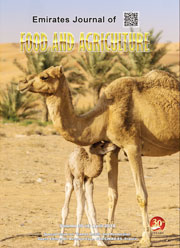ABSORPTION OF NUTRIENTS, GROWTH AND NUTRITIONAL DISORDERS RESULTING FROM AMMONIUM TOXICITY IN RICE AND SPINACH PLANTS
DOI:
https://doi.org/10.9755/ejfa.2016-09-1294Keywords:
Abiotic stress, Ammonium nutrition, Plant species, Oryza sativa, Spinacia oleraceaAbstract
Excess nitrogen in the ammonium form may induce different nutritional disorders in plants depending on the species cultivated. The
present study sought to evaluate the accumulation of nutrients, growth and visual symptoms in rice and spinach plants in function of the
ammonium concentrations. Two experiments were performed with rice and spinach plants in a greenhouse, at the Universidade Estadual
Paulista Júlio de Mesquita Filho, Campus of Jaboticabal-SP, Brazil. In each experiment five ammonium concentrations were used (10, 20,
40, 80 and 100 mmol L-1), arranged in a randomized block design with five repetitions. The effects of excess ammonium were studied on
the green color index, electrolyte leakage, accumulation of N, Mg, K and Ca in the shoots, leaf area, height, dry matter of root, shoots
and whole plant, and characterization of the visual symptoms of toxicity in the plants. These effects of excess ammonium reported above
are reflected in the production of plant dry matter, with a linear decrease in dry matter of the roots, shoots and whole plant. Excess
ammonium in the nutrient solution decreased the accumulation of dry matter due to reduced leaf area and increased cellular electrolyte
leakage which induced symptoms characteristic of ammonium toxicity in both species, and also decreased uptake of Ca, Mg and K in
rice plants and only Ca in spinach plants.










 .
. 